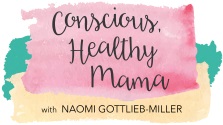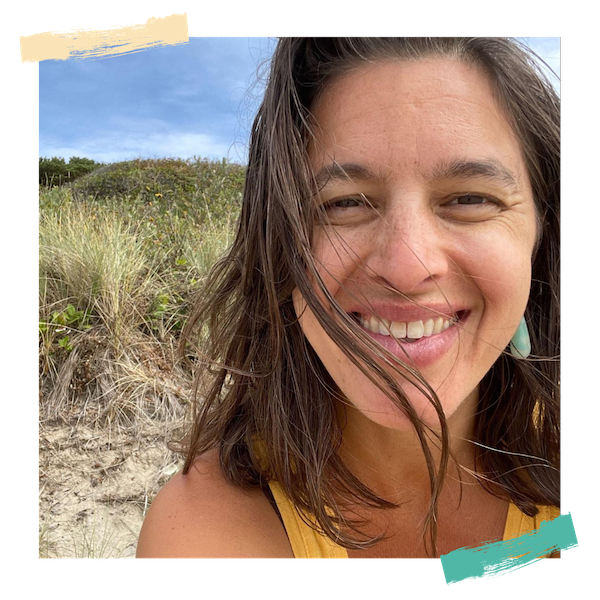There’s no such thing as “impossible.” Think about the word itself, Doris: “I’m possible.”
The quote is from a movie called “My Name is Doris.” Apparently, Audrey Hepburn said this once, too.
I haven’t seen the movie, but I love the quote and sentiment.
How many times a day do you tell yourself that something you want to do is impossible?
We all have big dreams and big visions for ourselves. We have hopes and wishes that too often go unfulfilled because we believe those dreams to be too big, too outlandish, or too difficult to achieve.
“I can’t” feels more comfortable than “I can,” because let’s face it, “I can’t” is easier. Deeming something to be impossible and unreachable allows us to remain exactly as we are. No heavy lifting involved.
“I can,” asks us to sweat and cry and struggle and even fail before we actually “can do” what we want. That’s what makes big dreams and outlandish goals so valuable. I can challenges us to stretch ourselves a little bit further than where we are right now.
That’s why “I’m possible” is so great and impossible is so problematic.
“Impossible” stops you before you even start.
“I’m possible” gives you a target.
Whenever Milly tells me she can’t do something that might still be just beyond her reach, I tell her she can and I show her how. Little by little, she learns new skills and grows. What was once, “impossible” is now a part of her everyday abilities.
This is what we all want for our kids. We want them to know “I’m possible” not “impossible.”
We teach our kids, “yes you can,” so when do we flip it and decide instead, “no I can’t?”
I’ve come up with a list of 5 ways to turn “impossible” into “I’m possible.”
1. Identify your why.
As in, “why I can’t” instead of “how I can.”
Make a list. Put it down on paper. Or on your phone. See the reasons why you can’t and get real with them. Once your why is in front of you and visible, it’s harder to ignore, avoid, or escape. You can more easily to address and confront your why.
2. Ditch excuses and avoid your triggers
When you look at your list, you’ll see a mix of excuses, triggers, and actual obstacles. The obstacles are the easiest to address because they are real. The excuses and triggers are harder.
An example of an excuse is saying, “I don’t have time to exercise.” No, you don’t prioritize exercise. Exercise doesn’t have to be a big event. Just like anything, you can start small and aim for 5 minutes every day. When you make something a priority, the excuse falls away.
A trigger is something that sets up a habit or an action. In the case of your impossible, the trigger is what prevents you from doing something you want or need to do.
For example, I know that if I check email or facebook before I do anything else in the morning, I will get sucked in and it will delay my morning workout, breakfast, and will often mean I am frantic or rushed when I need to leave the house. So I remove the trigger by keeping my computer off in the morning until I am done with my morning movement, breakfast, cleaning the kitchen, and getting dressed.
Every time I think I can sneak on and check facebook or my email really quickly, it always turns into a longer event than I intend, which consequently means I have less time to exercise in the morning which makes me cranky and stressed for the rest of the day. Remove the trigger to prevent all day stress and crankiness seems like a fair trade.
3. Honey, I Shrunk the Obstacle!
Usually something seems impossible because it’s so big. If you make the obstacle smaller, the goal will seem more attainable.
To shrink the obstacle, aim to do a little bit every day. Now for each goal this looks a little different. One way to think of it is to look at the big “impossible” goal and then figure out how to inch forward towards it.
If you want to wake up earlier in the morning so you have more time to exercise, you don’t start by waking up at 5:30am instead of 6:30am. You start by waking up at 6:25am. And then the next week you wake up at 6:20am. And then the next week you wake up at 6:15am. It might take a little while, but eventually, you’ll get closer and closer to 5:30am. Keep in mind, you’ll also want to adjust your bedtime but you do it in the same way. 5 minutes at a time so you are matching evening and morning. Shrink the obstacle and make it to your “I’m possible” wake up time.
4. Ride the Waves and Embrace your inner Nancy Drew
This is a twofer.
Ride the waves simply means, you should expect ups and downs. Some days will be easier than others. We usually aim to eat earlier in the evening, but there are some days that this habit, which we’ve had for a long time, simply doesn’t work or happen. I could get frustrated at myself or the situation; Or I could move on.
Moving on is healthier.
This is where Nancy Drew comes in. Be a good detective. Look for the clues as to why things didn’t work out. Is it something that can be avoided in the future (trigger) or is it something that can be planned for and handled in advance (obstacle)? Or was it some random freak thing that happened and might or might not happen again but isn’t worth going nuts over?
5. Don’t Be Discouraged
It’s hard to say, “I can” to something that challenges you. It’s especially tough if this “impossible” thing has been challenging or impossible for as long as you can remember. It takes time to rewire your brain and your actions. Be compassionate with yourself and kind as you shift from “impossible” to “I’m possible.”
Bonus Tip:
6. Don’t Confuse “I can’t” with “I don’t want to.”
One of my clients had a goal of feeling more awake and alert during the day, as well as less bloated. She decided to cut back on having a drink or 2 every night after dinner. After awhile of doing this, she was feeling really great – not foggy in the mornings, more clear and conscious. She also had more energy in the morning and felt less yucky in her body. One night she ended up having a few drinks again and woke up the next morning feeling terrible. She recognized the connection and decided she’d rather not feel that way, so she opted to stop drinking after dinner. Although she does occasionally have a drink or 2, it’s far less frequent and far less in consumption.
Another one of my clients had a goal of wanting to drink less alcohol. She didn’t overindulge regularly. Most nights, she’d have a glass or 2 of wine after dinner with her husband or a little more if she went out with friends. But she wanted to break the habit, so she tried to give it up. She tried everything. Tried replacing the wine with tea or with something else yummy. She tried going straight to bed after dinner. She tried all kinds of things. Nothing worked. Why not? Because she didn’t really want to stop having a glass or 2 of wine a night. And you know what? That’s just fine. She decided that what she really needed was more meditation, so she added a mindfulness and meditation class, which did stick and did help her feel less frantic and stressed.
So be very clear. If you think you can’t do something, check in to see if you just don’t want to do it or if you just feel overwhelmed at the idea of trying. The latter is workable; the former will not.
So when in doubt, channel your inner Audrey Hepburn and remind yourself that nothing is truly impossible. Make your mantra, “I’m possible,” instead and follow the 5 steps to turning those “I can’t” moments into “I can” goals.



